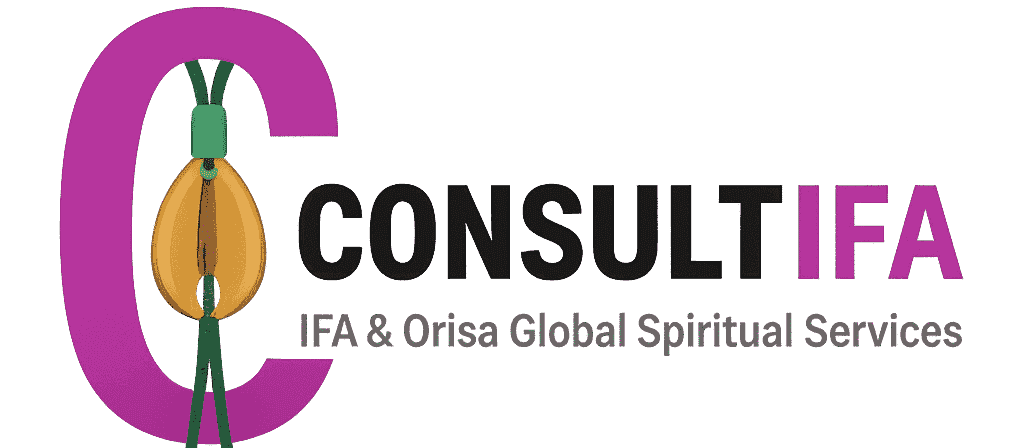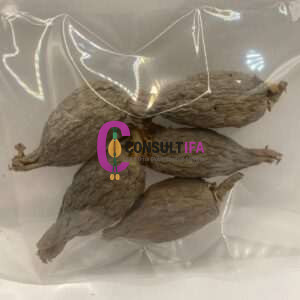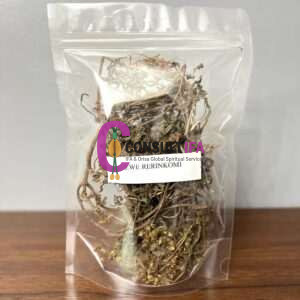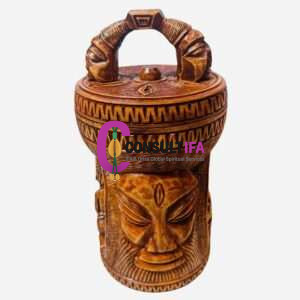Diving into the depths of African mythology, one encounters a diverse array of fascinating creatures. Among them, the Kholomodumo stands out as an intriguing character.
Originating from Southern Africa, this mythological beast carries a unique narrative that intertwines with the cultural fabric of the region. The name ‘Kholomodumo’ echoes through various regions across Africa, each page of folklore adding to its enigmatic persona.
The kholomodumo’s part in African mythology is as diverse and intricate as Africa itself, shedding light on long-standing customs and societal standards. As we delve further into understanding Kholomodumo’s significance, prepare for a journey through history and imagination.
Physical Attributes of Kholomodumo
Kholomodumo, one of the legendary creatures from African mythology, is known for its monstrous size and unique features. Let’s delve into the details of this fascinating beast.
Monstrous Size and Appearance
The first thing that strikes you about Kholomodumo is its colossal size. It’s described as being bigger than any animal or human, dwarfing even the largest elephants. Its body is so large it can block out the sun, casting long shadows over entire villages.
- Some tales say it’s as tall as a mountain.
- Others describe it being so wide that it spans rivers.
Its appearance is equally terrifying. Covered in thick fur like an ape but with scales like a crocodile, Kholomodumo is a sight to behold. Its eyes are said to glow red in the dark, striking fear into anyone who sees them.
Unique Features
What sets Kholomodumo apart from other mythological creatures are its unique features. Aside from its intimidating size and peculiar mix of fur and scales, it has several other distinctive characteristics.
- A pair of massive horns protrudes from its head.
- Sharp claws adorn each of its four limbs.
- It possesses a tail similar to that of a serpent.
These features not only make Kholomodumo visually distinct but also highlight its power and ferocity.
Symbolic Elements in Physical Form
Interestingly enough, every aspect of Kholomodumo’s physical form carries symbolic meaning within African mythology. Its size represents overwhelming power and dominance over all other creatures. The combination of fur and scales signifies duality – the ability to survive both on land (like mammals) and water (like reptiles).
- The glowing red eyes symbolize danger and evil.
- The horns represent strength while the claws indicate aggression.
- The serpentine tail suggests cunningness or deceitfulness.
In a nutshell, Kholomodumo’s physical attributes are not just for show. They symbolize various aspects of life and nature as perceived in African mythology.
Abilities of Kholomodumo Explored
Kholomodumo possesses intriguing supernatural abilities. These powers are central to many folklore tales and have certain limitations too.
Supernatural Powers in Detail
Kholomodumo is not your average beast. It’s got some serious mojo going on! This creature can change its size at will, growing as large as a mountain or shrinking down to the size of an ant. How wild is that?
It has the ability to swallow whole villages in one gulp. Imagine being able to eat an entire pizza in one bite! That’s the kind of power we’re talking about here.
Influence on Folklore Tales
These unique abilities make Kholomodumo a star character in many African folklore tales. Its massive size and appetite often symbolize natural disasters like floods or droughts that wipe out entire communities.
For instance, there’s this one story where Kholomodumo swallows up an entire village because they refused to pay tribute to him.
On the flip side, these stories also highlight the importance of unity and bravery. The villagers often band together with their hero using weapons to defeat this terrifying beast.
Weaknesses and Limitations
But every villain has its Achilles heel, right? Despite its enormous power, Kholomodumo isn’t invincible.
First off, it can’t change its size quickly. So if you catch it off guard while it’s small… well, you’ve got yourself a fighting chance!
Secondly, it’s vulnerable when swallowing things due to its stretched-out body position – a perfect opportunity for our brave heroes with their weapons!
Lastly, according to some tales, Kholomodumo cannot resist the sound of music. It gets so entranced that it forgets everything else around it – including potential threats!
Kholomodumo in Basotho Folklore
The Kholomodumo plays significant roles and appears in popular narratives. These tales provide valuable lessons for listeners.
Role and Significance of Kholomodumo
In Basotho stories, the Kholomodumo is more than just a creature. It’s a symbol, an embodiment of greed and gluttony.
This monster was known to swallow everything in its path. From livestock to people, nothing was safe from its insatiable hunger. Yet, despite its size and strength, it was defeated by a humble boy named Kammapa.
Kammapa represents courage and wisdom. He teaches us that no matter how big our problems are (like the enormous Kholomodumo), we can overcome them with bravery and intelligence.
Notable Appearances in Folklore Narratives
One of the most famous stories featuring the Kholomodumo is “Kammapa and the Kholomodumo”. In this tale, Kammapa uses his wit to defeat the beast.
He tricks the monster into swallowing hot stones wrapped in fat. The heat from these stones causes the creature’s belly to burst open, releasing all it had swallowed.
This story has been passed down through generations. It serves as both an exciting adventure tale for children and a moral lesson about facing challenges head-on.
Interpretation of Lessons from Tales
The story of Kammapa and the Kholomodumo isn’t just entertainment; it carries deep meaning within Basotho society.
The kholomodumo symbolizes obstacles or challenges we face in life. Its defeat shows that even seemingly insurmountable problems can be overcome with cleverness and determination.
Meanwhile, Kammapa represents every person who faces difficulties but never gives up. His victory over the kholomodumo is a reminder that we can conquer our fears and overcome our problems.
Cultural Significance of Kholomodumo
The Kholomodumo’s effect on cultural customs and social standards is significant. This piece explores how this legendary African beast has shaped different facets of African society.
Influence on Cultural Beliefs and Practices
Kholomodumo has deeply influenced cultural beliefs and practices in African societies. Its tales have been passed down through generations, shaping the way people perceive their world.
- For example, some tribes consider Kholomodumo as an embodiment of evil forces. As such, they perform rituals to ward off its negative energies.
- In other communities, it is seen as a symbol of strength and power. These groups often use its imagery in their art and traditional ceremonies.
These varied interpretations reflect the rich diversity within African cultures.
Impact on Societal Norms and Values
Beyond influencing cultural practices, Kholomodumo also affects societal norms and values. It serves as a tool for teaching moral lessons within these societies.
- For instance, stories about Kholomodumo are used to discourage greed and selfishness among children.
- The creature’s defeat in many tales symbolizes the triumph of good over evil–a common theme across different cultures worldwide.
Through these narratives, societies instill important values in their members from an early age.
Connection with Significant Historical Events or Periods
Interestingly, Kholomodumo is not just a mythical figure–it also connects with significant historical events or periods. Many believe that its legends are allegorical representations of real-life occurrences.
- Some scholars suggest that Kholomodumo could represent oppressive colonial forces that once plagued Africa.
- Others interpret it as symbolic of natural disasters like droughts or floods that have historically affected these regions.
While these theories vary, they all highlight how myths can serve as historical records–albeit cloaked in symbolism and metaphors.
Comparative Analysis: Kholomodumo vs Other Creatures
Kholomodumo has unique attributes and roles. Let’s compare it with similar creatures in African folklore and globally recognized mythological beasts.
Similarities with African Mythical Beasts
Kholomodumo shares certain traits with other monsters in African mythology. Like the Ninki Nanka of West Africa, it is known for its terrifying appearance and insatiable appetite. This gluttonous monster devours everything in its path, leaving destruction behind.
- Ninki Nanka: A dragon-like beast that lives in swamps.
- Kholomodumo: A monstrous creature that consumes all things.
The two beasts instill fear among locals due to their destructive nature. They play pivotal roles in teaching societal values such as courage and caution.
Contrasting Globally Recognized Mythical Creatures
When we broaden our perspective, we find some stark differences between Kholomodumo and other global mythological creatures. For instance, unlike the Greek Minotaur or the Norse Kraken, Kholomodumo doesn’t seem to have any human-like qualities or intelligence.
- Minotaur: Half-man half-bull creature trapped within a labyrinth.
- Kraken: Giant sea monster capable of sinking entire ships.
- Kholomodumo: Gluttonous monster consuming everything indiscriminately.
While Minotaur and Kraken are associated with specific locations (a labyrinth and sea respectively), Kholomodumo is not confined to one particular place but roams freely causing havoc wherever it goes.
Cultural Impact Evaluation
The cultural impact of these mythical creatures varies greatly across societies. In African cultures where Kholomodumo originates from, this beast serves as a metaphor for gluttony and greediness. It teaches people about the consequences of overindulgence and unchecked consumption.
In contrast, creatures like Minotaur and Kraken are often used to symbolize power, chaos, or the unknown. They evoke a sense of awe and respect among their respective cultures.
Despite their differences, all these mythical beasts serve a common purpose – they embody cultural values and beliefs, shaping societies’ understanding of morality and nature’s forces.
Unique Characteristics of Kholomodumo
Exclusive Traits of Kholomodumo
Kholomodumo, a creature from African mythology, is no ordinary beast. It’s marked by unique traits that make it stand out in the crowd of mythical beings.
- First off, this creature is gigantic. We’re talking bigger than elephants or dinosaurs.
- Secondly, it has an insatiable appetite. This thing can eat everything and anything in its path.
- Thirdly, Kholomodumo is known for its terrifying roar that echoes across the land.
These are just some of the peculiarities that separate Kholomodumo from other mythological creatures.
Origins Behind These Traits
Now you might be wondering where these characteristics come from? Well, let’s dive into some history.
The origins of these traits can be traced back to Sotho folklore. The Sotho people believed in a world inhabited by supernatural beings and used these stories to explain natural phenomena.
For example:
- The enormous size of Kholomodumo could symbolize overwhelming challenges or problems.
- Its endless hunger might represent greed or consumption without thought for consequences.
- The terrifying roar could signify impending danger or a call to action.
These interpretations provide insight into the cultural significance behind each trait.
Interpretations Affected by These Traits
So how does all this affect our interpretation of Kholomodumo?
Well, understanding these unique characteristics allows us to see beyond the literal depiction of a monster. Instead, we can interpret Kholomodumo as a symbolic representation of various aspects of life and society.
For instance:
- Its enormous size reminds us that we often face larger-than-life challenges which require courage and resilience.
- The insatiable appetite serves as a warning against unchecked greed and overconsumption.
- Lastly, its terrifying roar teaches us to heed warnings and prepare for potential dangers.
By understanding these traits, we can appreciate the depth and complexity of African mythology, specifically the legend of Kholomodumo.
Conclusion
The Kholomodumo, with its unique physical attributes and abilities, has a significant place in Basotho folklore. Its cultural significance and comparison with other mythological creatures further highlight the distinctiveness of this creature. The Kholomodumo’s uniqueness is not just limited to its characteristics; it also extends to its role in African mythology.
We invite you to delve deeper into the world of African mythology by exploring more about such fascinating creatures. Discover how these myths shape culture and societal values, offering a rich tapestry of narratives that continue to captivate audiences worldwide.
FAQs
What physical attributes does Kholomodumo have?
The Kholomodumo is often described as a large, monstrous creature in Basotho folklore. Its specific physical features can vary across different narratives but it’s generally portrayed as intimidating and fearsome.
What abilities does the Kholomodumo possess?
While specifics can vary, common themes include immense strength and potentially supernatural powers. These attributes contribute to the creature’s formidable reputation.
How does Kholomodumo feature in Basotho folklore?
In Basotho folklore, the Kholomodumo often plays the role of an antagonist or challenge to be overcome, symbolizing trials or obstacles.
How does Kholomodumo compare with other mythological creatures?
While comparisons can be drawn with other creatures from global mythologies – like dragons or sea monsters – the Kholomodumo holds unique traits rooted deeply within African cultural contexts.
Why is understanding mythical creatures like Kholomodumo important?
Understanding mythical creatures like the Kholomodumo offers insights into cultural values and societal norms of their origin cultures, providing a unique perspective on human history and imagination.
Where can I learn more about African mythological creatures like Kholomodumo?
The Guide to African Mythologies on CultureBay.co is a comprehensive resource packed with articles, images, and content about legendary monsters and mythical creatures from Africa.





